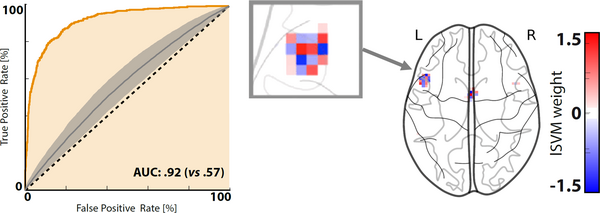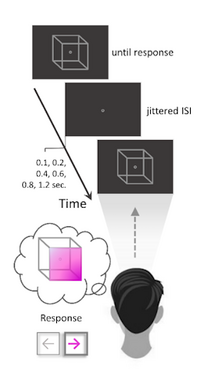Within-subject mental representations
The neural bases of mental intrusion
This research axis builds on our expertise in the field of fMRI capture of phasic symptoms. Seminally developped for hallucinations, more recent work explores the neural bases of post-traumatic reliving. These functional signatures may lead to innovative therapeutic neuro-guided interventions. Finally, we are investigating the computational mechanisms responsible for the emergence and extinction of these mental representations in situations of uncertainty.
Contacts
- Renaud Jardri
- Paul Allen
- Arnaud Leroy
Key publications
Ongoing research projects

Our team is recognised for its expertise in hallucinations capture imaging (Jardri et al., 2013; Lefebvre et al., 2016; Leroy et al., 2017). A crucial step before considering clinical applications was to develop a tool for rapid, reliable and automated detection of functional fluctuations associated with the hallucinatory process (ANR-16-CE37-0015 grant). Using a fMRI database containing thousands of auditory-verbal hallucinations (AVH), rest and mental imagery periods, we trained and validated classification algorithms to distinguish AVH from rest or concurrent mental events (Fovet et al., 2022), and to detect the pre-hallucinatory period (de Pierrefeu et al., 2018). We are continuing to optimize these algorithms for real-time clinical applications.

Perception is an inference process about the state of the world, combining our sensory inputs with prior knowledge (see also Axis 3). Ambiguous figures, capable of inducing a bistable percept (in which the mental representation of the object oscillates between two equi-probable configurations), are of particular interest in studying these inferential processes. Following on previous work from the team (Leptourgos et al., 2020a, 2020b, Leclercq et al., 2024), we combine behavioral, electrophysiological and computational approaches to understand the mechanisms involved in the integration of the different sources of information useful for perception.
Test our psychoPy version of the Necker Cube task here

The recent development of symptom capture methods based on real-time fMRI now enables detecting the onset/offset of hallucinations with a spatio-temporal precision compatible with clinical application. In the UNREHAL project (ANR–22-EXPR-0006 grant, PEPR PROPSY national plan), we aim at validating an innovative neurofeedback strategy using rt-fMRI automated decoding of per-hallucinatory brain activity for therapeutic purposes (Donantueno et al., 2023). We will train patients with refractory hallucinations to act on their symptoms and better understand the cognitive strategies that can have a direct neurophysiological effect on these experiences. Professor Paul Allen (KCL, UK) joined the team as international WILL Chair for the duration of the project. The UNREHAL therapeutic trial is currently recruiting.

